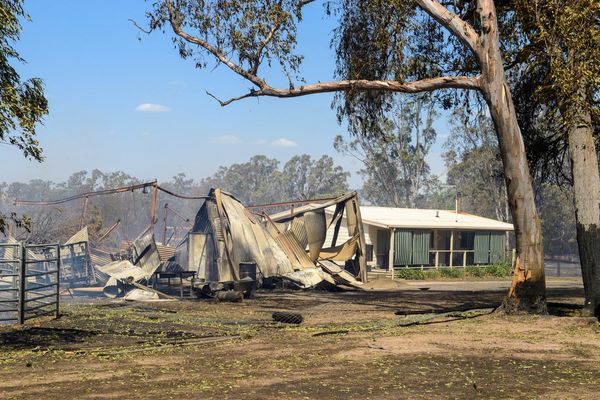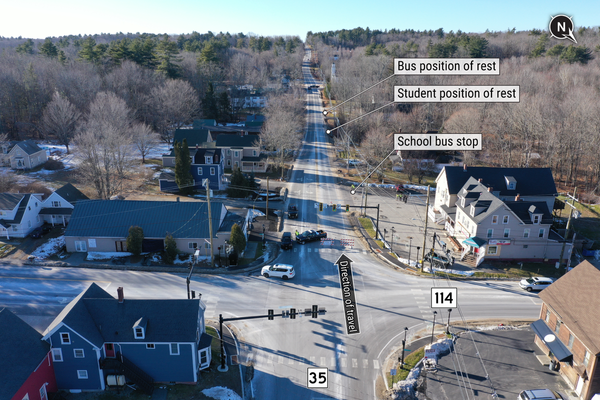
From the outside, Asria Mohamed’s tent in a refugee camp in south-west Algeria could be mistaken for a typical four-door nomadic dwelling used by Sahrawis, people from Western Sahara, though it is smaller in size.
Inside, however, is a series of QR codes attached to 19 melhfas, traditional clothing worn by Sahrawi women, that have been stitched to the tent’s interior walls, forming a colourful tapestry. Visitors are invited to scan the QR codes to dive into the stories of the women behind each melhfa.
Jaimitna (Our Tent) is a collaborative artistic project, led by Mohamed, to highlight the plight of Sahrawis and their homeland on the north-west coast of Africa, which has been occupied by Morocco since 1976, when Spain’s rule over its last foreign territory ended, in what is known as “the last colony in Africa”.
“You approach Jaimitna and it’s made of a colourful fabric, and you think ‘oh, it’s so beautiful.’ But then when you scan the QR codes you will get the stories of horror,” Mohamed says.
“I asked 19 woman human rights defenders from the occupied territory to send me their melhfas,” she says.
“One of the women, Zainabu Babi, actually sent me a bloodstained melhfa from when she was beaten up during a protest.”
Hand-sewn by two women from the refugee camps, Jaimitna was at the centre of the Sahara international film festival, FiSahara, held earlier this month at the Ausserd camp in Algeria. The theme of this year’s festival was Jaimitna Fi Cinema (Our tent in the cinema): To Resist is to Win.
A tent, or a jaima, is a symbol of identity, hope and resistance for Sahrawi people. It typically has four doors to allow a way out in the opposite direction when a sandstorm hits.
Nearly 200,000 Sahrawi refugees live in Algeria as the result of almost 50 years of conflict. Each camp is named after the towns deserted in 1975.
Morocco, which has erected a 1,700-mile (2,700km) barrier fortified with landmines across Western Sahara to stop guerrilla fighters, holds a tight grip on the territory, despite the UN not recognising its claim of sovereignty.
FiSahara is the only film festival held in a refugee camp and although cinema is the focus, it brings together artists from all disciplines and has grown into a wider cultural event. Those who attend are hosted by refugee families.
This year, the Palestinian film 200 Meters, directed by Ameen Nayfeh and produced by Ahmad al-Bazz, won the festival’s top film prize, the White Camel award. It tells the story of a man who lives on the opposite side of Israel’s separation wall from his family in the West Bank. When his son is hit by a car, he must cross over.
The festival’s second prize went to Unsubmissive, a Spanish documentary directed by Laura Dauden and Miguel Ángel Herrera about the struggles of female Sahrawi activists, many of whom live in the occupied territory.
Other films shown included DESERT PHOSfate – which explores the environmental impact of phosphates and their illegal extraction in Western Sahara – by the artist, film-maker and climate activist Mohamed Sleiman Labat, who founded the Motif Art Studio.
Located in the Sahrawi refugee camp of Smara, the studio was made entirely from discarded materials.
“Issues of self-representation and Sahrawis making films about themselves are part of the decolonisation processes we are going through,” says Labat, who continues to live in the refugee camps.
“My art is not for entertainment – it’s to challenge our perception, question the status quo and highlight the importance of giving spaces to underrepresented voices and narratives.”
Like Labat, Mohamed uses art to raise awareness about Sahrawis. “Jaimitna is like a coin which has two faces. One of resilience and one of suffering,” she says.
“Even though we are refugees impacted by the conflict, if you come to the camps, you see people dancing, and people appreciating life. When you read the story of each woman, you will see suffering but you also see their positive side; some of them are writers now, some are writing poetry.
“Westerners often only show the victim side of refugees,” she says. “I wanted to show our strength, too.”







